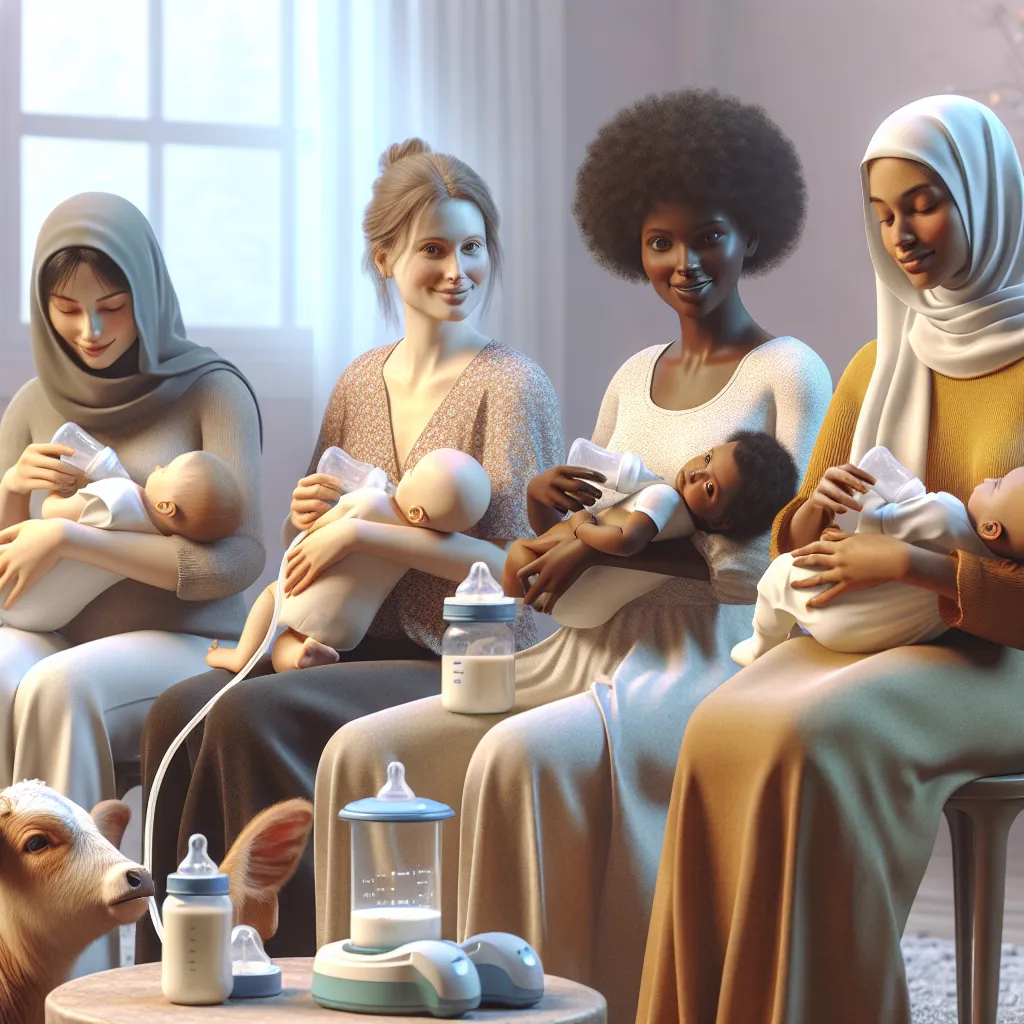
Lactation for Liberation
In a world where the lines between human and animal rights blur, a group of young mothers find themselves at the center of a controversial art piece orchestrated by the enigmatic and provocative artist known only as Pink. These women, all of whom had recently given birth, were selected for their willingness to participate in a project that promised to challenge societal norms and ignite conversation around the commodification of motherhood and the ethics of dairy farming.
The backstory of these women is as varied as their reactions to the project. Some were activists, eager to use their bodies as a canvas for protest. Others were struggling financially and enticed by the compensation. A few were fans of Pink, drawn to the idea of being part of her artistic vision. But all of them shared a commonality: the desire to be part of something that would make people think differently about the world.
Their children, the natural recipients of their breast milk, were cared for in a state-of-the-art nursery provided by the project. The mothers were assured that their participation would not affect the health or well-being of their babies, as they could pump additional milk to ensure their infants' needs were met.
Pink's decision to use human breast milk instead of a cow's udder was a deliberate and symbolic choice. She wanted to draw attention to the often overlooked fact that humans are the only species to drink the milk of another species. By having the mothers feed a calf, she sought to highlight the absurdity of this practice and encourage viewers to consider the implications of their dietary choices on animal welfare.
The process of milking these women was not without discomfort. The grimace on one mother's face was a genuine reaction to the physical pain of having her engorged breasts pumped for the project. It was a stark reminder of the hidden realities of both human and animal lactation—often sanitized in the public eye but raw and challenging in private.
The mothers' feelings about their participation were complex. Some felt empowered, taking pride in the statement they were making. Others felt vulnerable, their bodies exposed and used in ways they hadn't fully anticipated. But all of them understood that their involvement was about more than just themselves; it was about sparking a dialogue and questioning the status quo.
Pink's video, "Raise Your Glass," was never meant to be comfortable. It was designed to confront, to unsettle, and to provoke thought. The young mothers, with their saggy, large breasts and their willingness to feed a calf, became symbols of a society grappling with the ethics of consumption and the boundaries of maternal sacrifice. Through their participation, they raised their glasses—not in celebration, but in solidarity for a cause that demanded attention and reflection.